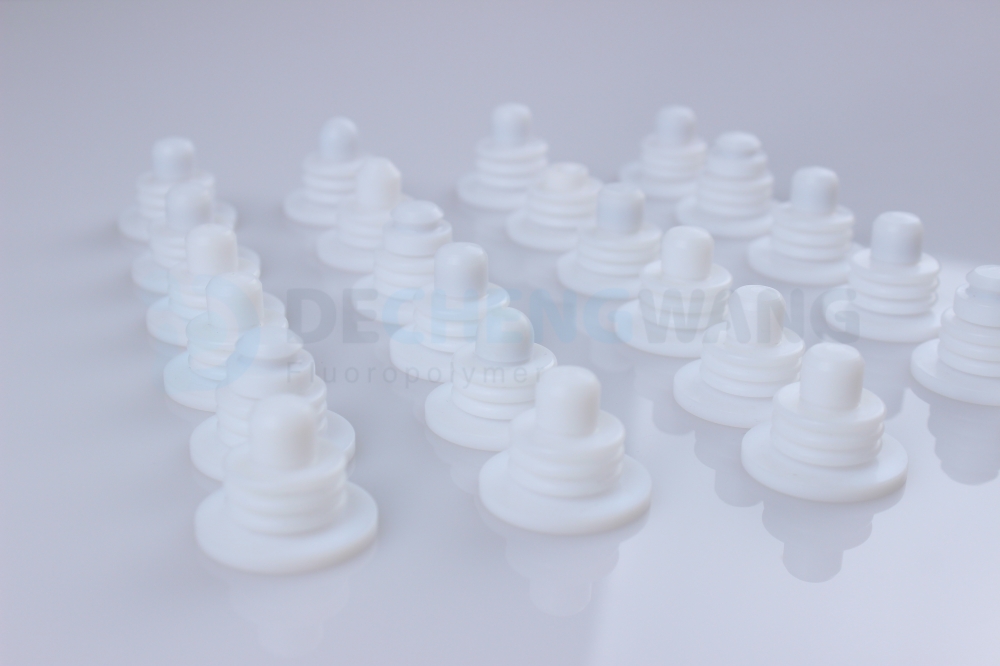
Applications: PTFE Bellows seals for valves
Bellows Mechanical Seal are a type of mechanical seal where the spring element is a bellows. They are a critical component in preventing fluid or gas
Fluoropolymers originated from a family of resins characterized by the bonds between fluorine and carbon. Domestically identified as Teflon, several types of fluoropolymers are available in the chemical industry. They are essentially those carbon compounds having fluorine atoms. They are identified by their high-resistance properties towards acids, bases, and other solvents and are currently used in the automotive, oil, gas, medical, mineral, and aerospace industries. PTFE, FEP, and PFA are three of the most notable fluoropolymers used in these industries for their versatility.
While PTFE is extensively used in domestic frying pans for its non-stick properties, PFA is industrially an indispensable material for chemical labs due to its outstanding resistance. Although both belong to the same family of carbon-fluorine bonds, their applications are in contrast. The purpose of this article lies in clearly defining the two most-used polymers in the chemical-based industries, PFA and PTFE, and highlighting the key similarities and differences between them.
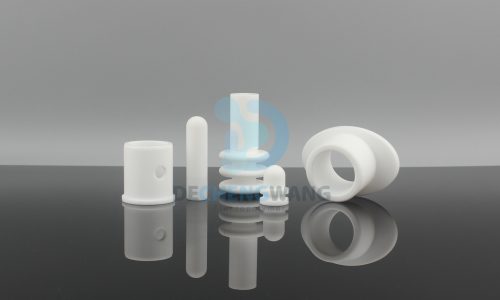
Expanded form: Polytetrafluoroethylene
Definition: Polytetrafluoroethylene is essentially a synthetic version of tetrafluoroethylene. Being a synthetic fluoropolymer, the molecule’s weight is heavier than others, making it a solid form of fluorocarbons. It does not mix with water or water-containing substances and doesn’t get wet. In other words, it is hydrophobic due to the loss of London dispersion forces. It has a low friction coefficient with solids attributable to fluorine’s negative charges and inertness. It is also referred to as Syncolon and Fluon but is mainly identified as Teflon.
It is interesting to know that PTFE was an accidental creation. Its discovery happened on the 6th of April, 1938, when Roy worked on certain refrigeration gasses. Their main aim was to make environmentally friendly, safe, and non-flammable refrigerants that can be used as coolants in the domestic household. His team was in charge of looking after a specific tetrafluoroethylene sample. When the sample was taken out of the freezer, he and his associates at the time found the tetrafluoroethylene sample to be polymerized due to low temperatures. It had turned into a white solid with wax texture, which has been used for more than 80 years in everyone’s daily life.
PTFE properties include:
PTFE is used in the following applications:
Lubricants: The negative charges inherent in this fluorocarbon compound reduces its friction coefficient and make it slippery. Thus, PTFE enhances the smooth operation of machinery and reduces weathering away of parts and components. This fluorocarbon compound plays a significant role in optimizing the consumption of energy.
PTFE is the most unique of all fluoro compounds ever to exist. It is widely referred to as the ancestor of fluoroplastics and is excellent for its differentiating characteristics. Its formidability lies in the following benefits:
PTFE’s primary disadvantages lie in the following:

Expanded form: Perfluoroalkoxy
Definition: PFA is another similar kind of fluoropolymer plastic. One can say that this copolymer fluorocarbon has been created to cover the disadvantages found in the popular PTFE. Thus, any substance made of PFA material can be quickly processed through conventional extrusion, welding, and injection molding techniques. This can be quickly melted and transferred in a liquid state, which was a significant industrial limitation in the case of PTFE. Similar to PTFE, they are characterized by a low degree of friction coefficient.
PFA materials are invented under the name Teflon. Teflon is widely used for PTFE products but includes other fluoropolymers like PFA and FEP. PFA has been developed with different alkoxy substituents. Its history is unknown, but it originated as a copolymer that covers all the limitations of PTFE- such as the unconventional techniques for extrusion. It is a meltable version of PTFE that can be processed using conventional methods.
PFA properties include:
PFA is widely used in the following applications:
Perfluoralkoxy is highly regarded as a temperature-resistant version of other fluoroplastics like FEP. It has a lower melt processing viscosity than PTFE polymers and is characterized by the following advantages:
PFA’s primary disadvantage are as follows:
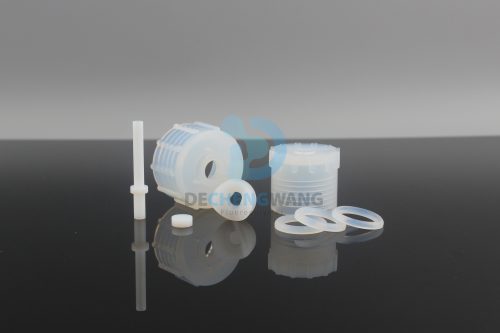
PFA and PTFE, the two primary fluoroplastics used in chemical-based industries, are similar in several aspects as they come from the same family of fluorocarbons. The similarities are mentioned below:
Temperature range: PTFE and PFA have the same range of temperatures, which can be attributed to their high bonding strength between the atoms of fluorine, carbon, and oxygen. Both exhibit processability over 260 degrees Celsius (500 degrees Fahrenheit).
Resistance to corrosivity: There are many instances in power plants where level measuring devices are constantly exposed to corrosive media. These aggressive fluids, like strong acids and bases, corrode these devices when they come in contact, especially with dense and viscous textures. The contacted components to such solvents can cause damage; the same is valid with tank lining. Custom PTFE and PFA manufacturers provide high resistance to such corrosion and can reduce the build-up of the product.
Hydrophobic properties: PTFE and PFA are both hydrophobic and will not get wet or contaminated when exposed to water-based solvents. This is extensively beneficial in areas where these solvents condense the antenna of the level-measuring device. When made with these fluorocarbons, the measurement will remain accurate and reduce the build-up.
Low friction coefficient: These fluoroplastics are characterized by a low friction coefficient, giving them a slippery and viscous texture. This property combined with the extraordinary PTFE temperature resistance, they are also used as lubricants.
Dielectric constant: The dielectric constants of fluoroplastics are the same, while the strengths may differ (PFA being superior by 3-4 times). Their dissipation factor is quite similar as well.
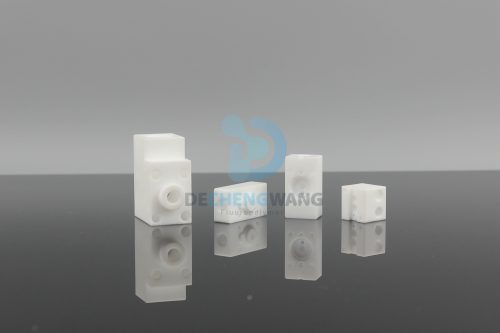
| Basis | PTFE | PFA |
| Chemical Properties | Inert | Inert |
| Dielectric Strength | 50-100 KV/mm | 55 KV/mm |
| Tensile Strength | 25-35 MPa | 28-31 MPa |
| Coefficient of Friction | 0.03-0.05 | 0.05-0.08 |
| Flexural Modulus | 495 MPa | 690 MPa |
| Coefficient of Linear Thermal Expansion | 14 x 10-5/K | 12 x 10-5/K-1 |
| Elongation | 350-400% | 260-300% |
| Compressive Strength | 11-13 MPa | 12-15 MPa |
| Machinability | Excellent | Excellent |
| Service Temperature (Melting Point) | -95 degree fahrenheit to -71 degree fahrenheit | -95 degree fahrenheit to -71 degree fahrenheit |
| Thermal Conductivity | 0.19 W/MK | 0.25 W/MK |
| Cold Flow Resistance | >10% 6.9 MPa | >2% 6.9 MPa |
| MIT Folding Endurance | 1 x 106 | 1 x 105 |
| Water Absorption | <0.01% | <0.03% |
| Cost | Relatively Cheap | Relatively Expensive |
From the above table, one can make the following inferences:
The chemical industry is vast, and it is safe to say that fluoropolymers are responsible for several applications run in these sectors. These fluoropolymers are indispensable in many chemical industries and applications, thanks to their strong resistance to corrosive elements and non-solubility characteristics. PFA and PTFE are similar in their reactions toward electricity and non-flammable characteristics. Their surface resistivity, dissipation factor, and dielectric constants are virtually identical.
The bottom line is that PTFE and PFA are superior in various aspects, whether electricity, service temperatures, cold flow, or multiple folding properties. Contact us to get a wide range of quality manufactured PTFE and PFA components for multiple industry specializations!

Bellows Mechanical Seal are a type of mechanical seal where the spring element is a bellows. They are a critical component in preventing fluid or gas
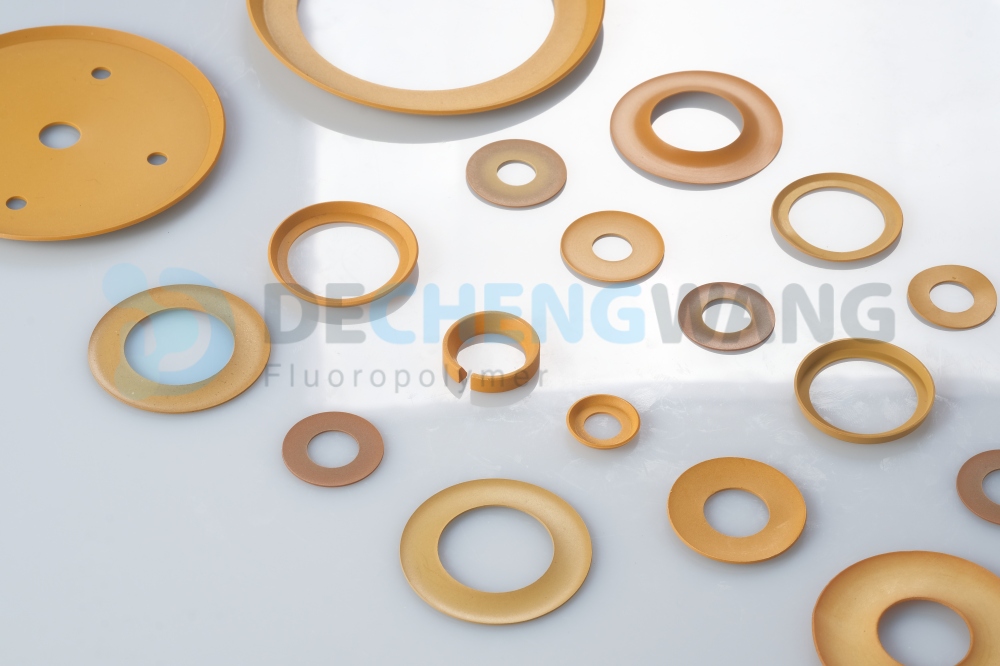
In the world of engineering and manufacturing, where precision and efficiency are paramount, the role of wear resistance plastic has evolved far beyond their conventional image.
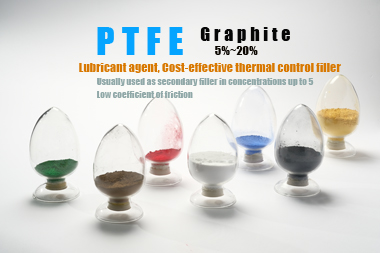
PTFE is a versatile polymer with outstanding properties like chemical resistance, low friction coefficient (self-lubricating), non-stick nature, and excellent electrical insulation. However, it also has some